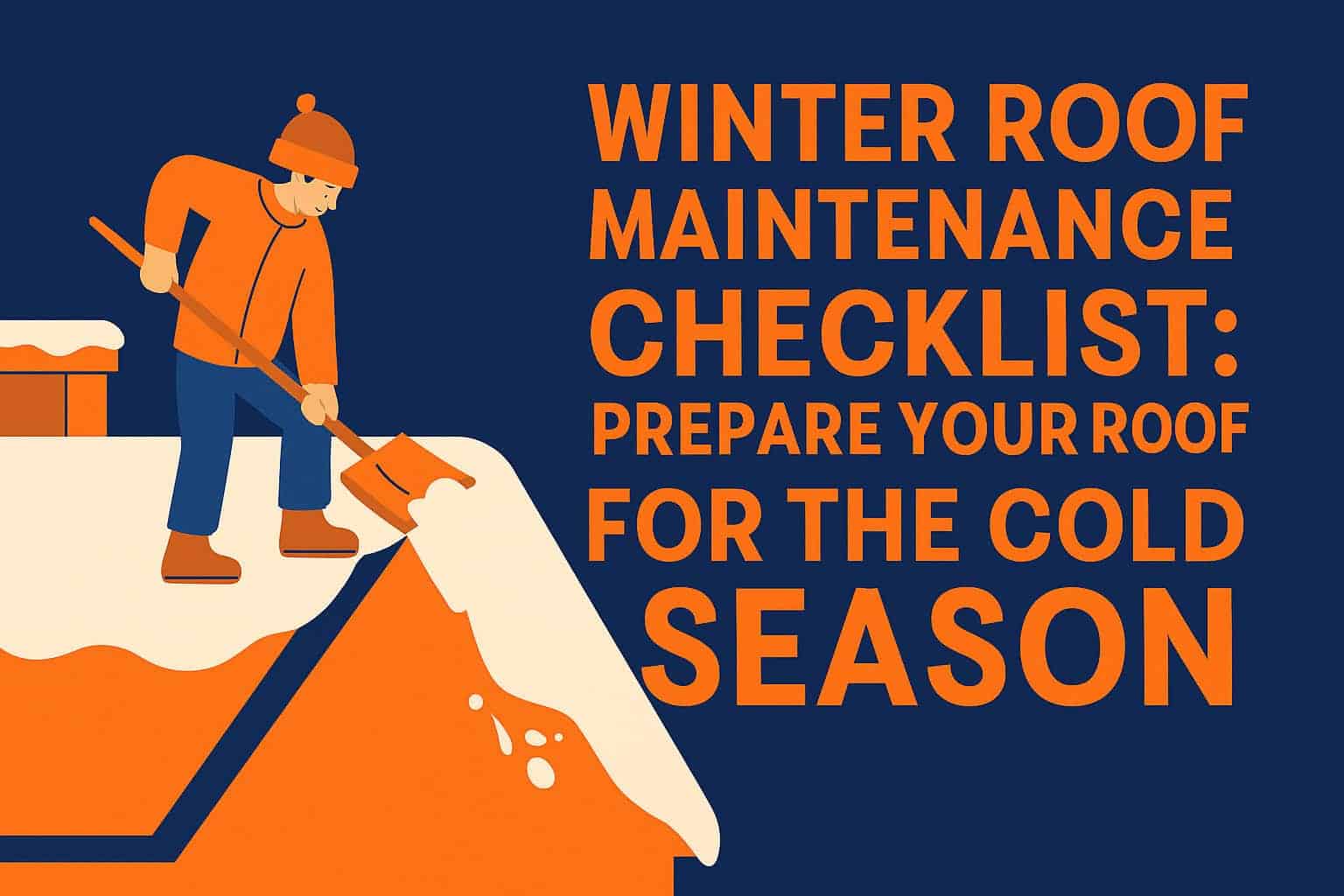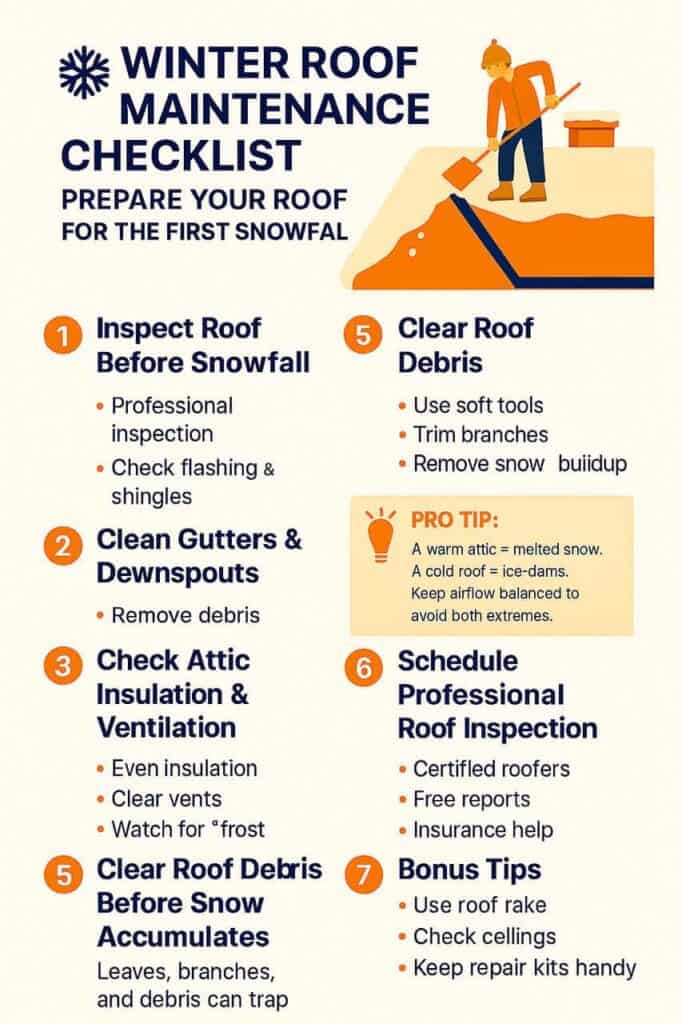
Winter Roof Maintenance Checklist: Prepare Your Roof for the Cold Season
GET A FREE INSPECTIONFree Roof Inspection
Stay Warm and Worry-Free This Winter: RoofClaim’s Ultimate Winter Roof Maintenance Checklist.
Cold weather can be tough on your roof. Before the first snow hits, make sure your home is protected with our expert winter roof checklist.

Section 1: Inspect Your Roof Before the First Snowfall
Winter brings moisture, ice, and fluctuating temperatures — all of which can damage shingles and flashing.
Action Points:
- Schedule a professional roof inspection to detect leaks, cracks, or weak spots.
- Check flashing around vents and chimneys for gaps.
- Inspect for missing or loose shingles.
Learn more about roof inspections.
Section 2: Clean Gutters and Downspouts
Clogged gutters cause ice dams and water buildup, which can lead to roof leaks and fascia damage.
Action Points:
- Remove leaves, pine needles, and debris.
- Ensure downspouts direct water at least 5 feet away from the foundation.
- Consider installing gutter guards to minimize maintenance.
Section 3: Check Attic Insulation & Ventilation
Proper insulation prevents ice dams and reduces heating costs.
Action Points:
- Ensure attic insulation is evenly distributed.
- Verify vents are clear and air is circulating.
- Look for condensation or frost buildup.
Pro Tip:
A warm attic = melted snow. A cold roof = ice dams. Keep airflow balanced to avoid both extremes.
Section 4: Examine Roof Flashing, Seals & Skylights
Cracked sealants and worn flashing are among the leading causes of winter leaks.
Action Points:
- Seal minor gaps with roofing caulk.
- Have professionals replace damaged flashing.
- Clean skylight edges to prevent condensation buildup.
Section 5: Clear Roof Debris Before Snow Accumulates
Leaves, branches, and debris can trap moisture and accelerate wear.
Action Points:
- Use a soft broom or leaf blower (never a metal rake).
- Trim overhanging branches.
- After heavy snowfalls, remove excess buildup to reduce strain.
Explore our roof maintenance guide.
Section 6: Schedule a Professional Roof Inspection
Even small issues can become major winter problems.
Why choose RoofClaim:
- Certified roofing professionals
- Free inspections and damage reports
- Hassle-free insurance claim assistance
Section 7: Bonus Tips for Homeowners
- Use a roof rake after storms to prevent ice buildup.
- Inspect ceilings inside for water stains.
- Keep emergency repair kits handy.
Check out our Roof Replacement Services
FAQ (Winter Roof Maintenance Checklist)
- Why is winter roof maintenance important?
Winter conditions like snow, ice, and freeze-thaw cycles put extra stress on your roof, leading to potential damages, leaks, and may be costly repairs. Proper maintenance prevents issues such as ice dams, clogged gutters, and even structural strain, This will ensure your roof lasts longer and protects your home effectively and also pocket friendly. - What are ice dams and how can I prevent them?
Ice dams form when heat escapes from the attic, melting snow on the roof that refreezes at the eaves, causing water to back up under shingles. Prevention includes proper attic insulation, ventilation, clearing gutters before winter, and safely removing snow from the roof’s edges. - Can roof repairs or replacements be done in winter?
Yes, roof repairs and full roof replacements can be done in winter, but weather conditions must be suitable. Roofing contractors often require temperatures above 40°F for shingle roof installations. Specialized shingles and materials can be used in colder weather, and but remember roof inspections can be performed year-round to identify issues early. - How do I safely remove snow from my roof?
By using a roof rake from the ground to clear excess snow, especially after heavy snow storms. Avoid climbing on the roof, as icy surfaces are dangerous. If snow accumulation exceeds six inches, consider hiring professionals to remove it safely and prevent structural damage. - What signs indicate my roof needs winter maintenance or repair?
Look for water stains on ceilings, sagging roof areas, icicles forming along roof edges, cracked or missing shingles, and damaged flashing around vents or chimneys. Early detection via professional can prevent small damage from worsening during winter.



